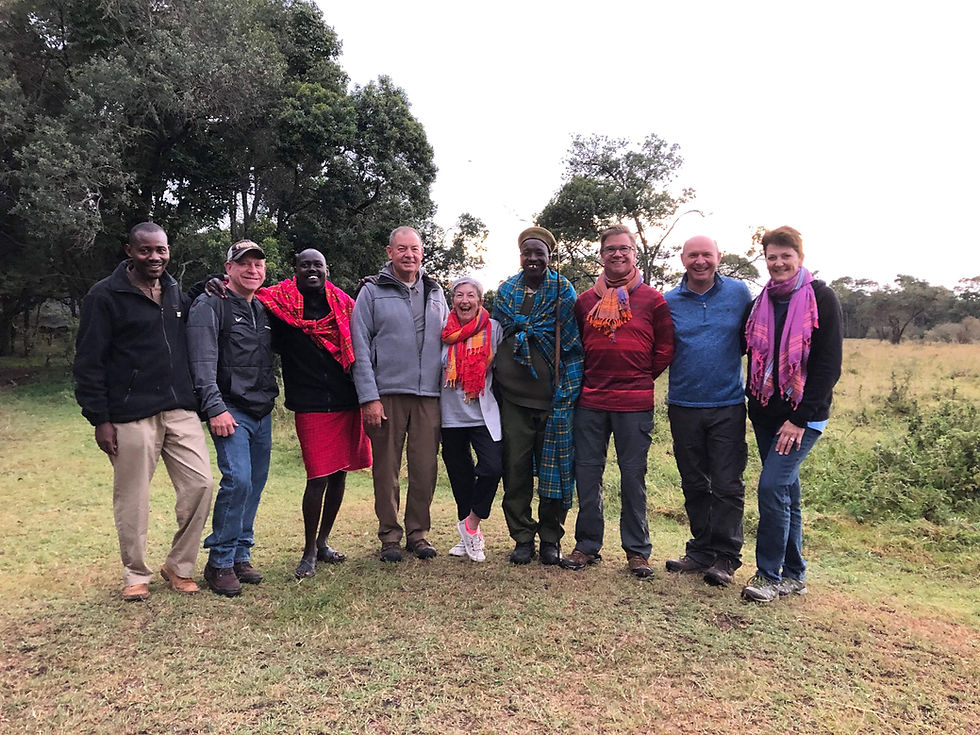A Great Guide Means Smiles Everywhere
- Beyond Your Dreams Safaris

- Aug 10, 2020
- 3 min read
Updated: Dec 13, 2021
There is much more to guiding than just driving your safari vehicle! Read on as Ernest Mutugi, Guide/Director of Beyond Your Dreams Safaris, details what goes into making a good safari from his own "Field Work Handbook."

Being ready before a game drive is very important to me and leads to successful safaris. To plan for my drives, I reflect on nature's surroundings, listening as nature speaks to me. At night, the sounds emanating from the bush can help you know where to look for specific animals. For example, hyenas laughing signals excitement at finding a meal. Maybe they have killed a prey or are waiting to steal a meal from another predator. The presence of big cats in that area is inevitable. As the next day dawns we will head in the direction of last night's sounds, hoping to glimpse hyenas or cats, still enjoying the remnants of a kill. The roar of lions at night also brings hope for a successful early morning game drive!
I also rely heavily on my senses and instincts during game drives. You have to be spot on with your vision, as well as have detailed knowledge of animal structure, so you can easily discern animals from a distance. Driving fast to get to a sighting and finding it is only a termite hill is a guide's nightmare! I rely on the 3 fundamentals of Motion, Color, and Structural Shapes to reward my clients. Some clients have confused impala with a lion at a far distance because they only see color. But, for me, I immediately recognize the conspicuous reddish-brown color of impala or the pale brown of a lion. Knowledge of structural characteristics allows me to recognize the difference between a Black and White rhino from a distance by looking at the shape of their horns and the top line of their backs.
Many times on a game drive you encounter heavy scent on the paths, especially a path that has seen buffalos as their urine scent and pancake-shaped dung are easy to identify. Fresh dung and urine scent will mean they are not far away. As a guide, knowledge of dung and scat shapes as well as their color can lead to proper identification of a nearby animal. Lions have a very dark scat that is almost watery due to drinking the blood from their kills. Normally dog and cat families also have a sausage shaped scat. On one early morning game drive, I saw this dark, almost soluble scat as well as lots of urine and drag marks. I was quite sure there was a lion kill nearby and just ahead about 15 meters we were rewarded to see a pride of lions with a buffalo carcass. Scat and dung are also a way the animals mark territories.
Spoor and tracking is an essential skill but it can be very difficult in the rugged terrains of the African savanna. However it is always important to keep looking at the path to identify spoor or tracks to lead you to another sighting.
Animals have also adapted to changing weather patterns and change their behaviors in different eco-systems. In Nairobi National Park during the rainy season it is difficult to locate white rhinos during the day. White rhinos, like most grass-eating ungulates, prefer dry ground and short grass. Tall grass can be infested with biting insects so the rhinos avoid that during the day when insects are most active. They move to the forest grade on the north side of the park where grass is short because of the forest canopy and the ground is hard. In the evening hours, they will come out to graze. This also applies to zebras too. They move to the south of the park where the grass doesn't grow tall. Studying these different behaviors leads to successful game drive sightings.
Changing seasons also account for different bird sightings as there are intra and palearctic migration of birds. A good guide needs to know which birds are affected during these migrations. The different flowering plants of the changing seasons also attract different birds. Sunbirds love the various colored flowers and the fruiting trees will draw other species. Ripe figs attract a frenzy of birding activities and draw hornbills and barbets.
I hope you have enjoyed learning about some of the many details that I take into account to make each safari beyond your dreams! And look at these smiles!



Comments